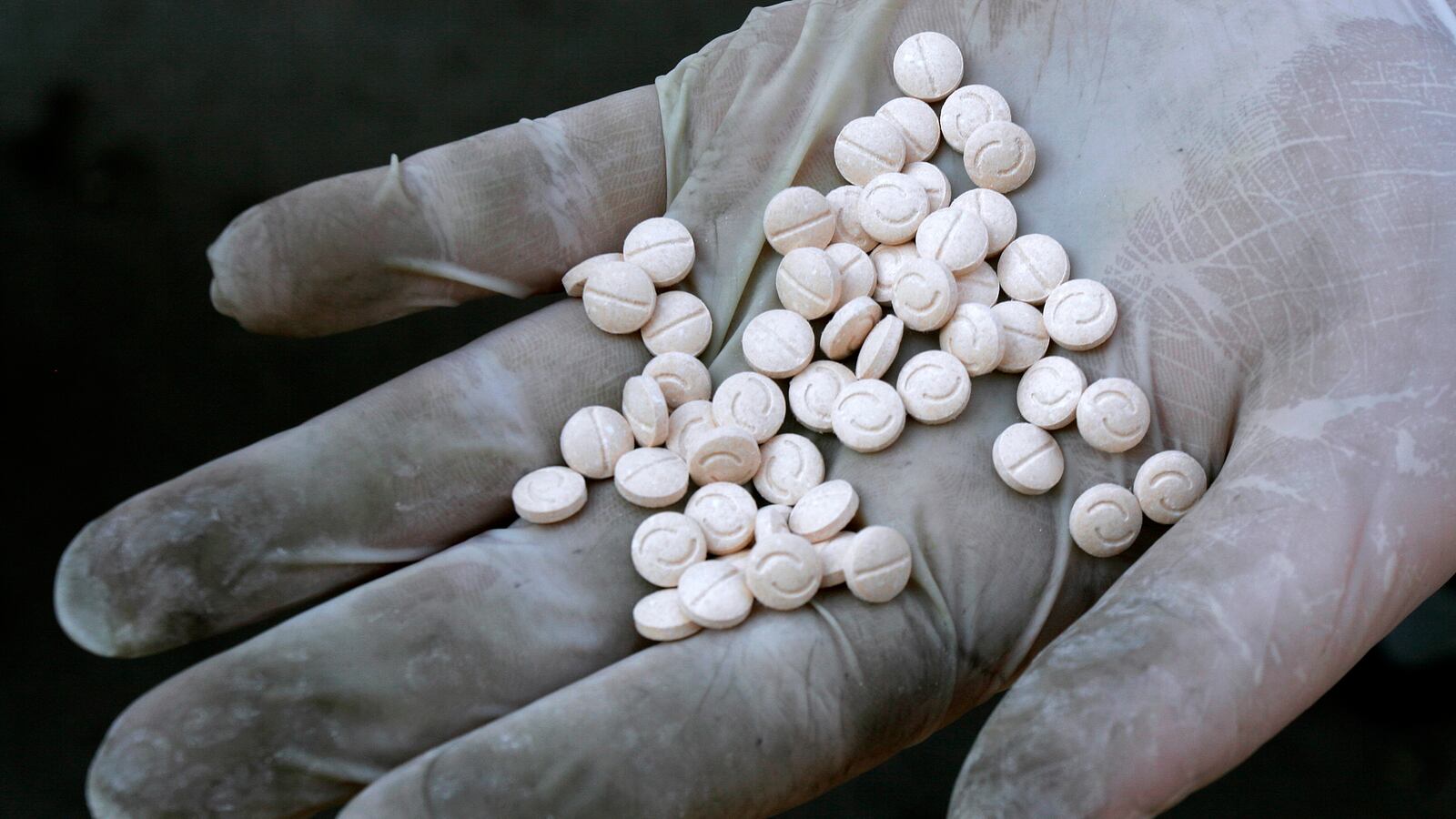CASTELLAMMARE DI STABIA, ITALY—When Italian customs police discovered a modest cache of amphetamines with the logo “Captagon” in a container of counterfeit shirts in the southern port of Salerno a few months ago, they knew they were on to something big.
Captagon-branded fenethylline (a variant of amphetamine) is a favorite drug among addicts in the Middle East and was found in the hideout of the terrorists who attacked the Bataclan theater in Paris in 2015. It is known to be widely used by ISIS fighters in Libya, and most importantly, trafficking the drug has become a key source of revenue for the so-called Islamic State.
The shirt shipment was found just as the COVID-19 lockdown ended in Italy, and authorities were sure that because synthetic drug makers in Europe had been forced to stall operations, drug-dependent pushers would be bringing it in from abroad. The relatively small amount tucked in the shirts was likely a test run to see if authorities were watching. The shirt shipment offered the clue they desperately needed. But because the cache was so small, they didn’t act on it. Instead, they set a trap.
Early Wednesday morning, they caught exactly what they were looking for: around 84 million Captagon pills—about 15 U.S. tons—worth $1.12 billion. They were hidden in paper cylinders in three containers sent by the same Syrian company that shipped the badly made shirts, according to the lead investigating magistrate, Ivana Fulco. As with the shirts, the Syrian company had addressed the shipment to a company in Libya where it was marked to travel by way of a Swiss company with connections in Salerno.
The goods were marked “desks and athletic clothing,” and investigators said Wednesday morning the drugs would not have gone to Libya but instead were meant to be offloaded by Italy’s entrepreneurial criminal gangs and distributed throughout Europe.
Investigations into just who was planning to do that are underway with the Neapolitan Camorra at the top of the list.
Video distributed by Italy’s financial police shows them cutting open the paper cylinders, which were designed to block scanners that might have detected the drugs, as millions of the pills spill into containers.
The amphetamine haul is the biggest bust of its kind anywhere in the world and marks a change in strategy for European drug dealers and for cash-strapped ISIS, which used to buy its drugs from Calabrian 'Ndrangheta gangsters, according to Italy’s financial police.
In 2018, the same financial police who made the bust in Salerno confiscated nearly 100 million tablets of the narcotic meant for ISIS operatives in Libya that were being shuttled from pill mills in India and Sri Lanka by way of Italy’s notoriously unguarded port of Gioia Tauro in Calabria.
The financial police, who led the investigation along with a public prosecutor in Naples, said the money would have bolstered attempts by ISIS to rebuild the terrorist organization that Donald Trump said last year was defeated.
“It is known that ISIS finances its terrorist activities in large part with the trafficking of synthetic drugs produced largely in Syria, which has become the leading world producer of amphetamines in recent years,” the statement says. “The final destination for the amphetamines is likely that multiple organized crime groups intended to distribute the drugs in Europe.”
The police say the hypothesis is that during the COVID-19 lockdown, the production and distribution of synthetic drugs in Europe has “practically stopped and therefore many traffickers with different organized crime groups have turned to Syria, where it does not seem to have slowed down.” While Captagon is not a drug of choice by most Europeans, it fills the gap while the clandestine European producers get up and running again. The investigators say Wednesday’s haul was big enough to supply all of Europe for several months.
Captagon was developed in the '60s by Western pharmaceutical firms to treat hyperactivity and depression but was quickly taken off the market because of its addictive traits. ISIS is now the main trafficker. Police do not exclude the possibility that further shipments are en route to Europe via other ports.







